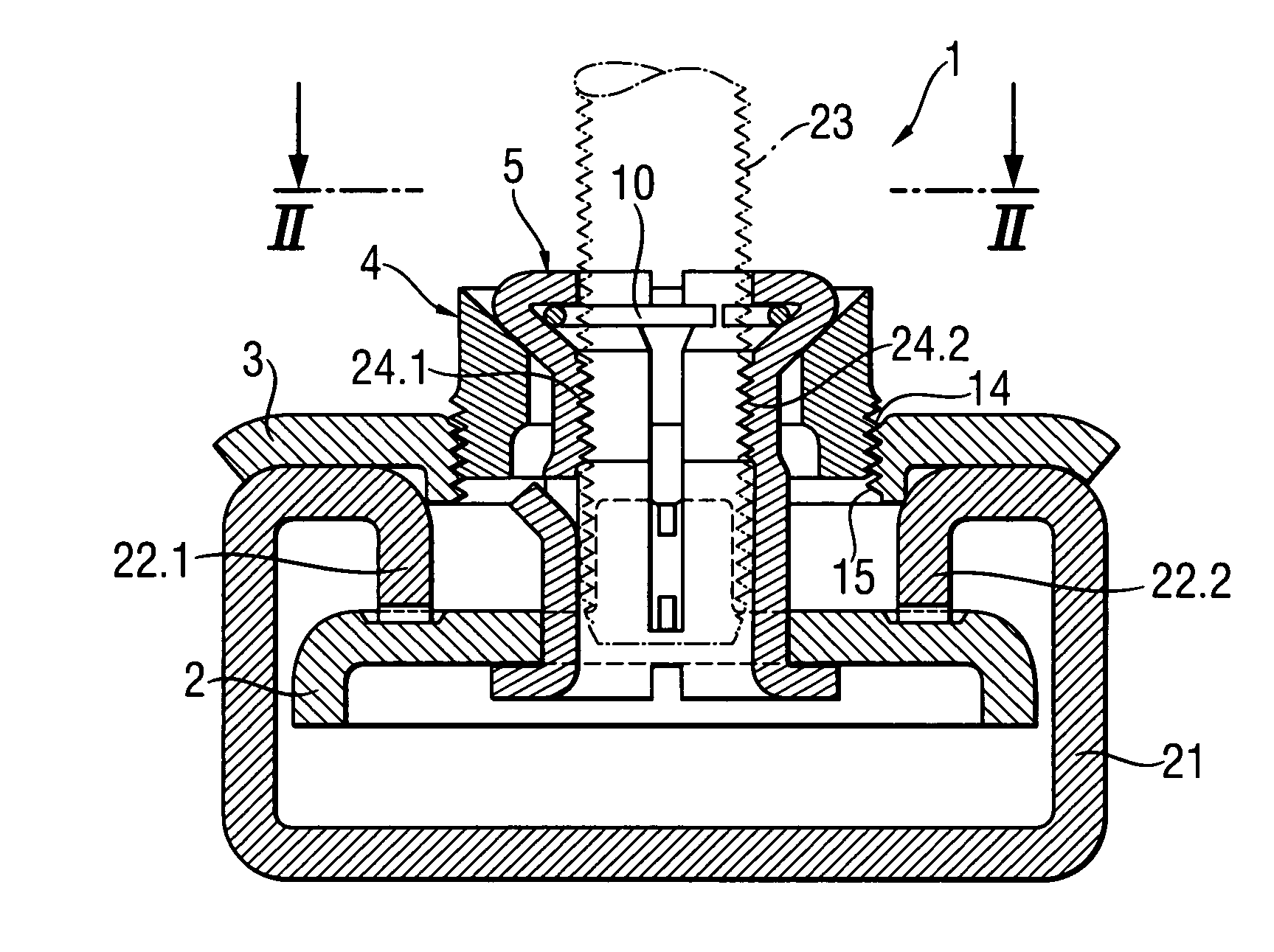Attachment system
a technology of clamping connection and clamping rod, which is applied in the direction of threaded fasteners, rod connections, screws, etc., can solve the problems of axial displacement of the to-be-clamped parts, e.g. rod movement, and the inability to precisely adjust the height of the aligned rod member, so as to facilitate cam sliding and prevent the self-release of the clamping connection
- Summary
- Abstract
- Description
- Claims
- Application Information
AI Technical Summary
Benefits of technology
Problems solved by technology
Method used
Image
Examples
first embodiment
[0047]FIG. 1a, as discussed above, shows an attachment system according to the present invention in its open position, i.e., in a position for receiving a rod member. In its setting direction, the inventive attachment system includes a rear engagement member 2 and a receiving sleeve 5 that engages the rear engagement member 2 from behind. At the end of the attachment system 1 remote from the rear engagement member 2, there are provided a stop 3 and an actuation member 4.
[0048]The receiving sleeve 5 ahs a flange 6 with which it engages the rear engagement member 2. The flange 6 is secured to the rear engagement member 2 with a sealing lacquer or a solder. The receiving sleeve 5 is formed as a one-piece part of a sheet metal and has two opposite slots 7.4 and 7.2 that extend from the end of the attachment system 1 remote from the rear engagement member 2 to an opposite end of the attachment system 1. At the end of the receiving sleeve 5 facing in the setting direction of the attachmen...
third embodiment
[0059]FIG. 6 shows a cross-sectional view of the attachment system 61 according to the present invention in its closed or locking position. An actuation member 62 of the attachment system 61 has a curved profile that engages in a complementary curved profile provided on a stop 63. Upon actuation of the actuation member 62, it slides over the stop 63 and is lifted off the stop 63, and due to the engagement of the receiving sleeve 64 with the actuation member 62, the threaded section 69.1 and 69.2 of the receiving sleeve 64 are displaced from their first, open position into their second, locking position.
[0060]The receiving sleeve 64, which is shown in FIG. 6, is formed of two sections 65.1 and 65.2. The sections 65.1 and 65.2 are resiliently connected with each other at their ends facing in the setting direction of the attachment system, with overlapping sections 66.1 and 66.2 which are soldered with each other. The separate sections 65.1 and 65.2 of the receiving sleeve 64 are conne...
PUM
 Login to View More
Login to View More Abstract
Description
Claims
Application Information
 Login to View More
Login to View More - R&D
- Intellectual Property
- Life Sciences
- Materials
- Tech Scout
- Unparalleled Data Quality
- Higher Quality Content
- 60% Fewer Hallucinations
Browse by: Latest US Patents, China's latest patents, Technical Efficacy Thesaurus, Application Domain, Technology Topic, Popular Technical Reports.
© 2025 PatSnap. All rights reserved.Legal|Privacy policy|Modern Slavery Act Transparency Statement|Sitemap|About US| Contact US: help@patsnap.com



